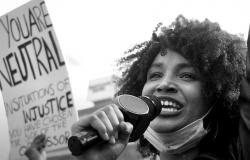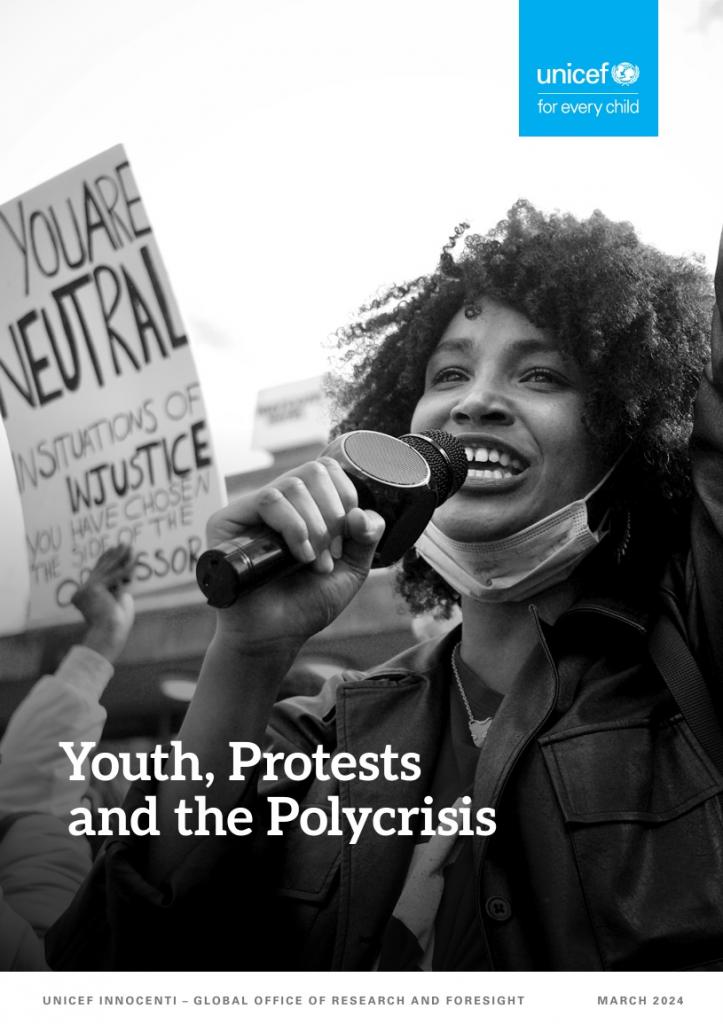Youth Protests: where have they come from? Where are they going?

Camila Teixeira introduces a recent report exploring the complexities of youth protest to understand both their promise and their challenges.
In recent years, more young people have been engaging in collective protest to advocate for causes that matter to them. From fighting racism to defending peace, from climate strikes to demands for better education or employment, these demonstrations are powerful expressions of youth agency over the issues shaping their lives, communities, and the planet. And they are not just for show: youth activism has practical effects and has led to meaningful change.
 Unfortunately, there are also risks when young people exercise their right to demonstrate peacefully. Some have encountered harsh repression, even when they are not violent. Other protests have led to rights violations, instability and unrest. The implications for children and young people, particularly in contexts of shrinking civic space, restrictions to the right to peacefully assemble, and overlapping crises, are significant.
Unfortunately, there are also risks when young people exercise their right to demonstrate peacefully. Some have encountered harsh repression, even when they are not violent. Other protests have led to rights violations, instability and unrest. The implications for children and young people, particularly in contexts of shrinking civic space, restrictions to the right to peacefully assemble, and overlapping crises, are significant.
In our latest report, we explore the complexities of youth protests, seeking to understand both their promise and their challenges. We carried out a rapid assessment of recent literature to consider the main trends in youth protests, their motivations, methods, impacts and future drivers. We also engaged directly with young people, asking them to shape the research and to present their vision about the future of activism. Here is what we found:
- Protests have increased in the past 20 years, with young people and students at the forefront. Protests, measured either as individual events or as larger mobilizations aiming to change the government, have increased in the past 20 years. Youth and students are also protesting more, and youth participation and leadership in mass campaigns have grown since 1990.
- Young people prefer informal political engagement – such as through protests and direct action. We already knew that young people are protesting because they are frustrated with traditional politics, but there is a number of reasons driving youth mobilization. Motivated by a sense of marginalization, they are rallying around many issues, ranging from politics and the environment to economics and social justice. Protests on global issues, such as on climate change, racial justice and gender equality, including through transnational youth-led movements, have increased.
- Young people use various methods in protests, often combining online and offline actions. Youth-led protests have introduced innovative tactics and embraced digital technologies to mobilize and organize, making it easier to gather people on the streets. Virtual and real-life events support and complement each other. But while digital platforms have democratized activism and made them more inclusive, they also pose risks such as surveillance, harassment, and repression.
- Youth promote more peaceful and inclusive activism. Contrary to stereotypes, protests with youth participation are more likely to be non-violent, larger and more inclusive of diverse groups. However, when protests involve young people and even if the demonstrations are peaceful, governments often respond violently. This pre-emptive repression raises many concerns as states may be failing to fulfil their obligations to protect protestors and their right to peacefully assemble.
- Youth participation contributes to protest impact and broader social gains, but youth-led campaigns do not always lead to direct improvements for young people. Here all the previous findings come together: Because young people’s participation in protests means less violent, larger, more inclusive and more innovative campaigns, youth protests tend to be more impactful. Mass protests where young people are on the front lines are more likely to be effective and to achieve positive outcomes in their aftermath. At the same time, these protests often fail to yield direct benefits for young activists, highlighting a need for greater youth involvement in decision-making processes within movements.
Looking ahead, we predict a continued rise in youth protests, an increase that will bedriven by past protest levels, increasing food prices, higher levels of urbanization, and declining satisfaction with life among youth in many parts of the world.
The young people we consulted for this research are mostly optimistic about the future of protests. They see an even greater use of digital technology in their activism. They aspire to become more proactive and professional protestors, continuing to rely on non-violent methods and having greater public recognition for their positive role. They also expect that their actions will trigger new opportunities for collaboration with governments, civil society and international organizations.
To fully harness the transformative potential of youth protests, policymakers, activists, and other stakeholders must be proactive. Governments should listen to and act on children’s and young people’s demands, and should actively engage with those involved in protests as a source of insights and futures thinking. Governments should also facilitate children’s and young people’s rights to peacefully protest. They must refrain from interfering with this right based on perceived or actual risks, and should not prohibit or disrupt peaceful protests unless on legitimate grounds. The prevention of violence during protests must be a priority.
Activists and members of social movements and other organizations mobilizing for protests also have a role to play. They should engage with young people and children as equal partners in decision-making before, during, and after protests. They should take all measures to prevent violence during protests. When involving individuals under the age of 18 in protests, a risk assessment and a plan to safeguard children are recommended. Finally, activists should support young people and children to be politically and civically engaged, especially those most marginalized, and should create a positive environment to facilitate their participation in protests, including by raising the awareness of adults.
Youth protests have been a powerful force for social change, driven by the aspirations of young people worldwide for a better life. This is changing how politics is done and our understanding of what it means to be politically active.
By recognizing young people’s role as political actors and heeding the recommendations outlined in our report, we hope governments, activists and other stakeholders can support them to continue to shape a more inclusive, just, and sustainable future.
You can find the full ‘Youth, Protests and the Polycrisis’ report, as well as a slide deck version with a quick overview of key findings, on our website: https://www.unicef.org/innocenti/reports/youth-protests-and-polycrisis.
Camila Teixeira, Policy Specialist at UNICEF.
This first appeared on From Poverty to Power.


